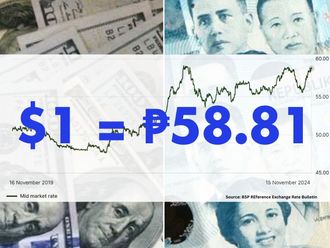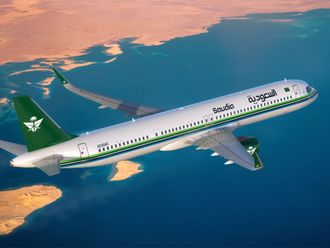Mumbai: India’s inflation rate reached a 32- month low in July, signalling that the nation’s weakest economic growth in almost a decade is starting to contain prices.
The wholesale-price index rose 6.87 per cent from a year earlier, less than all estimates in a Bloomberg News survey of 29 economists with a median prediction of 7.2 per cent, a Commerce Ministry statement showed on Tuesday. Central bank Governor Duvvuri Subbarao said on Monday that India had been “somewhat of an outlier” because slower growth had yet to damp inflation.
Stocks and bonds rallied on speculation the Reserve Bank of India will have scope to consider lowering interest rates in the second half of the year. Prime Minister Manmohan Singh’s government has struggled to revive expansion in Asia’s third- largest economy this year as a widening fiscal deficit and policy reversals on market opening undermined confidence.
“Given the substantial slowdown in growth, markets don’t rule out the possibility of rate cuts after September,” said Vivek Rajpal, a Mumbai-based fixed-income strategist at Nomura Holdings Inc. “A sustained drop in inflation will prompt the RBI to change its focus.”
The BSE India Sensitive Index of stocks climbed 0.5 per cent as of 3:04 p.m. in Mumbai, after falling earlier. The yield on the 8.15 per cent government bond due June 2022 slid to 8.18 per cent from 8.24 per cent earlier.
Subbarao’s reluctance to join a wave of cuts in borrowing costs from China to Brazil adds to pressure for Finance Minister Palaniappan Chidambaram to shore up India’s economic growth. Chidambaram, who at 66 became finance chief for the third time last month, plans to unveil steps for fiscal consolidation and clarify tax laws as he seeks to revive investment that’s been deterred by political gridlock.
‘Positive’ data
The inflation data “is a positive but we need to see if it’s trending downwards or just a one-off before we can expect the Reserve Bank to resume rate cuts,” said Mumbai-based Shishir Bajpai, senior vice president at IIFL Wealth Management Ltd.
India’s growth slowed to 5.3 per cent in the three months through March from a year earlier, the least since 2003, as Europe’s sovereign-debt crisis curbed global demand and Prime Minister Manmohan Singh’s inability to spur investment in industries such as retailing and insurance hurt confidence.
Exports slid 14.8 per cent in July from a year earlier, Director General of Foreign Trade Anup Pujari said on Tuesday, citing provisional data. Merchandise shipments declined to $22.4 billion (Dh1.49 billion) last month while imports slid 7.61 per cent to $37.9 billion (Dh2.51 billion), leaving a trade deficit of $15.5 billion (Dh1.03 billion), he said.
Subbarao left the benchmark repurchase rate at 8 percent last month for a second meeting, as the central bank sought to counter inflation that it said remained “well above” its comfort zone.
Growth Sacrifice
“Some sacrifice in growth is inevitable and an unavoidable cost in bringing inflation down,” Subbarao said in a speech in the southern Indian state of Kerala on Monday, citing monetary policy as the most immediate tool to contain costs. Core inflation at 5 per cent is “still quite high,” he said.
India’s consumer-price inflation is 10 per cent, the fastest among the BRIC nations of Brazil, Russia, India and China.
“Inflation is high, oil prices though they have come off $100 a barrel are at elevated levels, the external sector is under stress,” Subbarao said in a speech in the southern Indian state of Kerala. “There is just no space for fiscal or monetary response.”
Outlier Country
“In other emerging economies, inflation has also come down,” Subbarao said. “In India, even as the growth has come down, our inflation has not come down. India is somewhat of an outlier in the world.”
The rupee has tumbled about 18 per cent against the dollar in the past 12 months, making imports more expensive. It weakened 0.7 per cent to 55.7087 per dollar at 3:05 p.m. on Tuesday in Mumbai.
Tuesday’s wholesale-price index release is “quite perplexing” as “all the other indicators that we are looking at don’t suggest that there should have been such a fall,” said Samiran Chakraborty, head of regional research at Standard Chartered Plc in Mumbai. “My sense is this data won’t be a big determinant of the RBI action.”
India’s growth outlook faces additional threats from a weak monsoon and infrastructure deficiencies highlighted by the country’s worst power blackouts last month.
“If inflation slows further and growth dips to 5-to-5.5 per cent levels, then the Reserve Bank of India can think about easing,” said Radhika Rao, an economist in Singapore at Forecast Pte.
In contrast, growth elsewhere in the Asia-Pacific region show signs of holding up amid the faltering global recovery.
Australia, New Zealand
A report on Tuesday showed New Zealand retail sales advanced in the second quarter by almost twice the median forecast in a Bloomberg survey of economists. In Australia, a private survey of about 400 companies by National Australia Bank Ltd. showed business confidence in July rebounded from a 10-month low as interest-rate reductions helped ease pessimism.
The US may report retail sales rose 0.3 per cent in July, ending three months of declines, a survey of economists showed. A separate Labor Department report may show US wholesale prices gained 0.2 per cent in July from the previous month.
Asian stocks rose for the first time in three days ahead of the US data today. The MSCI Asia Pacific Index added 0.4 per cent as of 4:50 p.m. in Tokyo.
Europe risk
The risks to Asia’s economies from Europe persist. Germany’s gross domestic product rose 0.3 per cent from the first quarter, when it gained 0.5 per cent, the Federal Statistics Office said in Wiesbaden on Tuesday. French GDP was unchanged in the quarter.
A few Bank of Japan board members said the central bank should not dismiss any policy options in combating risks to the economy from the European crisis, a record of last month’s meeting showed today.
Subbarao said that India’s long-term growth story remains credible even as the weakening global and European outlook pose immediate risks to exports, fund flows and sentiment.
India’s inflation has probably been held up by rising wages, infrastructure bottlenecks, supply-demand imbalances and the rupee’s drop, he said.
The central bank also previously signaled that government spending is adding to inflationary pressure. The nation projects record borrowing of 5.69 trillion rupees ($102 billion) to plug a targeted budget shortfall of 5.1 percent of GDP in the year that began April 1.
Chidambaram faces the challenge of containing the budget deficit as a subsidy program for goods ranging from diesel to fertilisers boosts spending while slower growth crimps tax revenue. A panel has been established to help the government in “formulating the path of fiscal consolidation” and is expected to complete its work in a few weeks, the finance minister said earlier this month.
“Part of the inflation is from demand pressures,” Subbarao said on Tuesday. “So it’s not entirely supply shocks. Even if it is entirely supply shocks, monetary policy has to be the first line of defense.”












